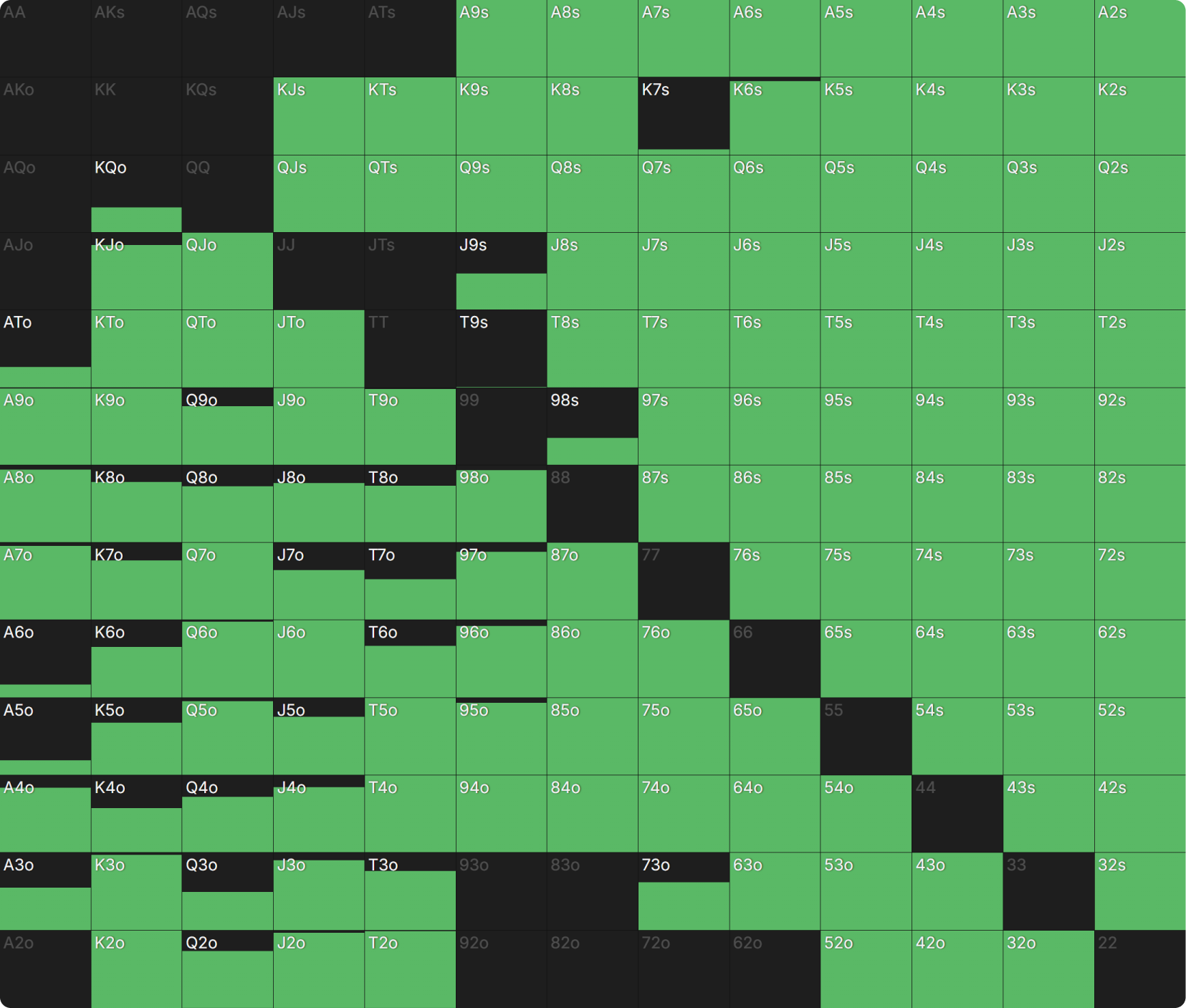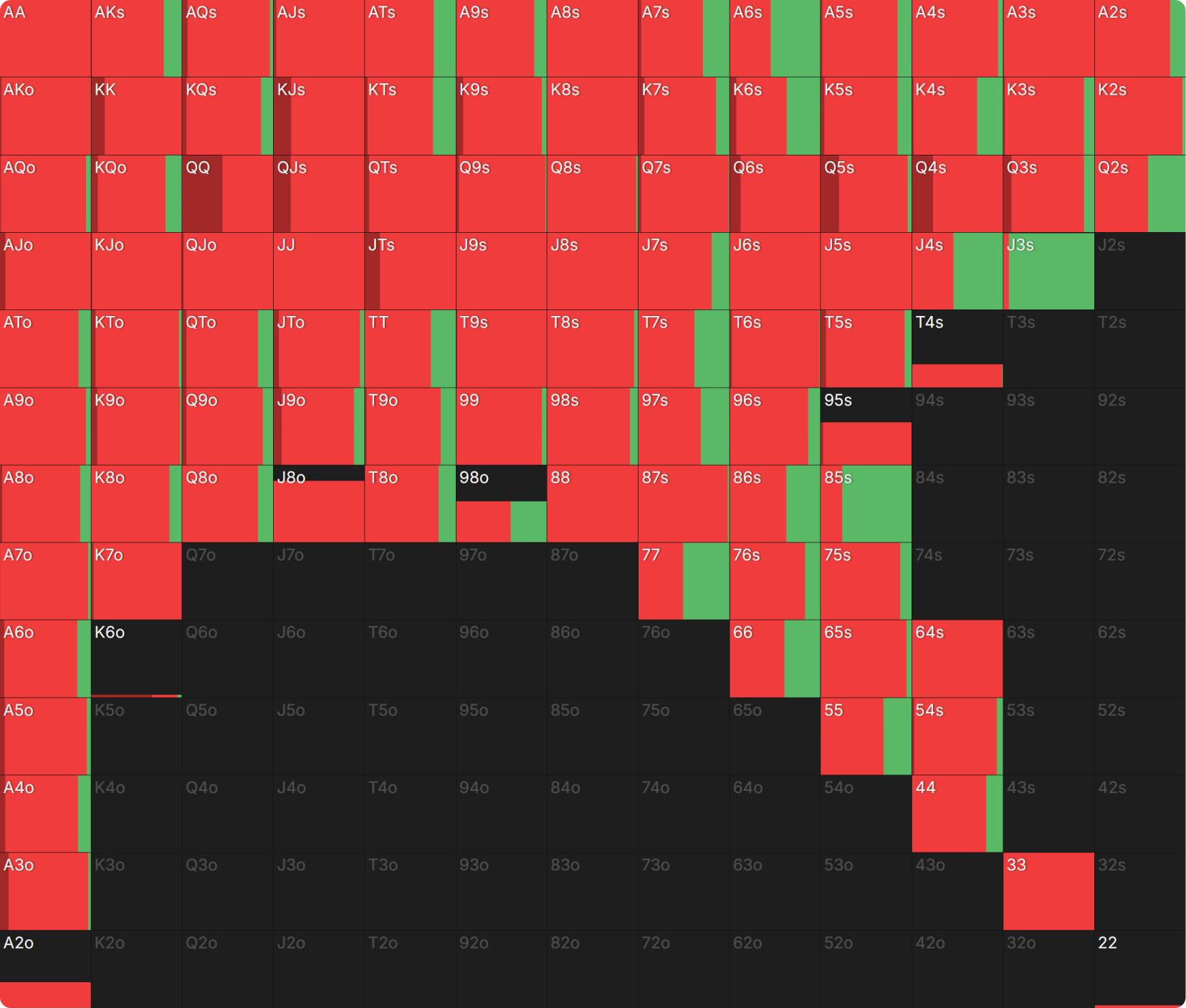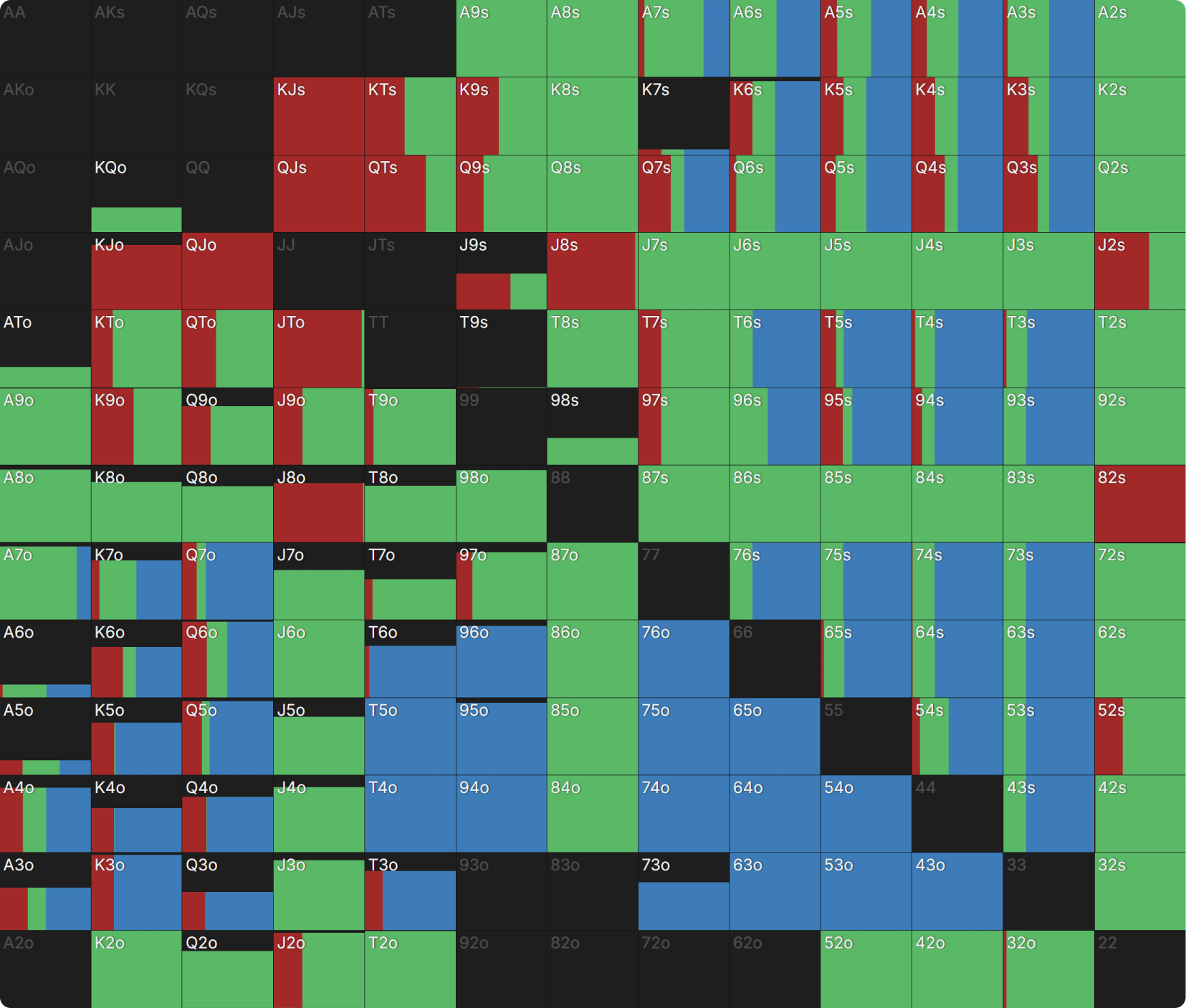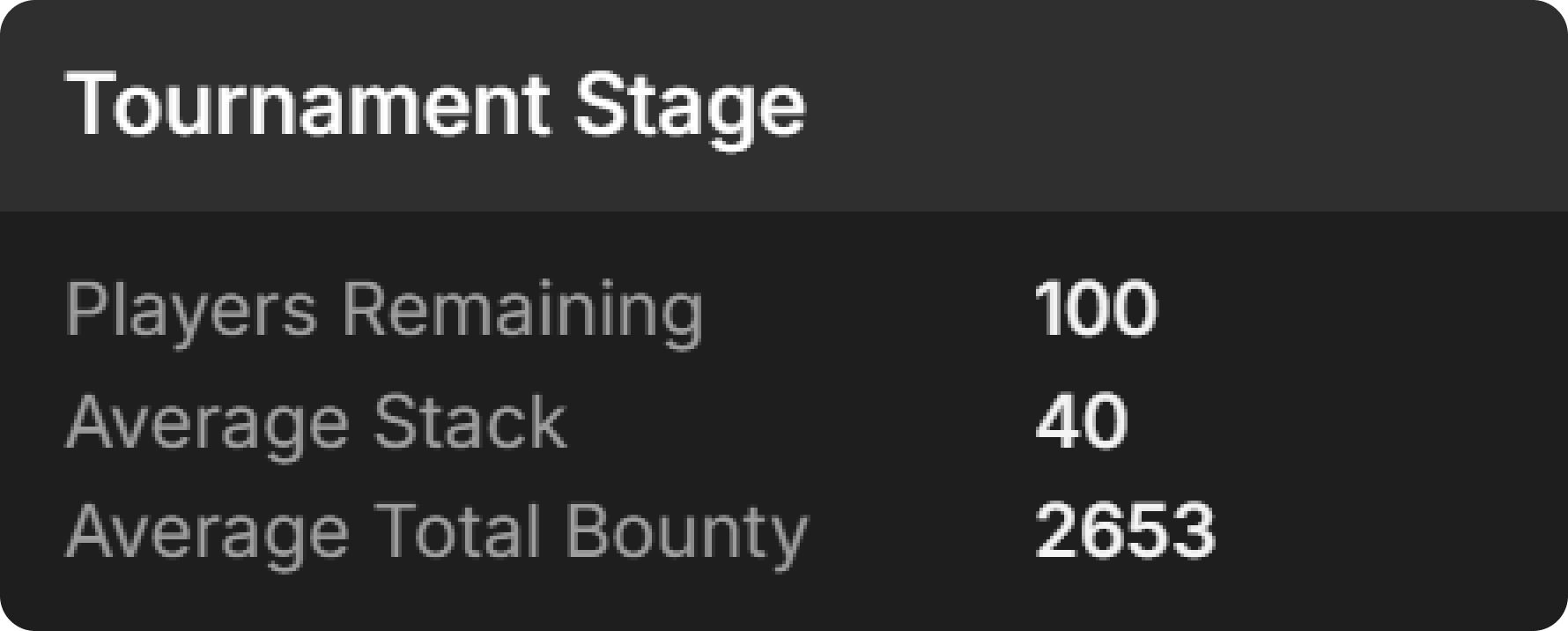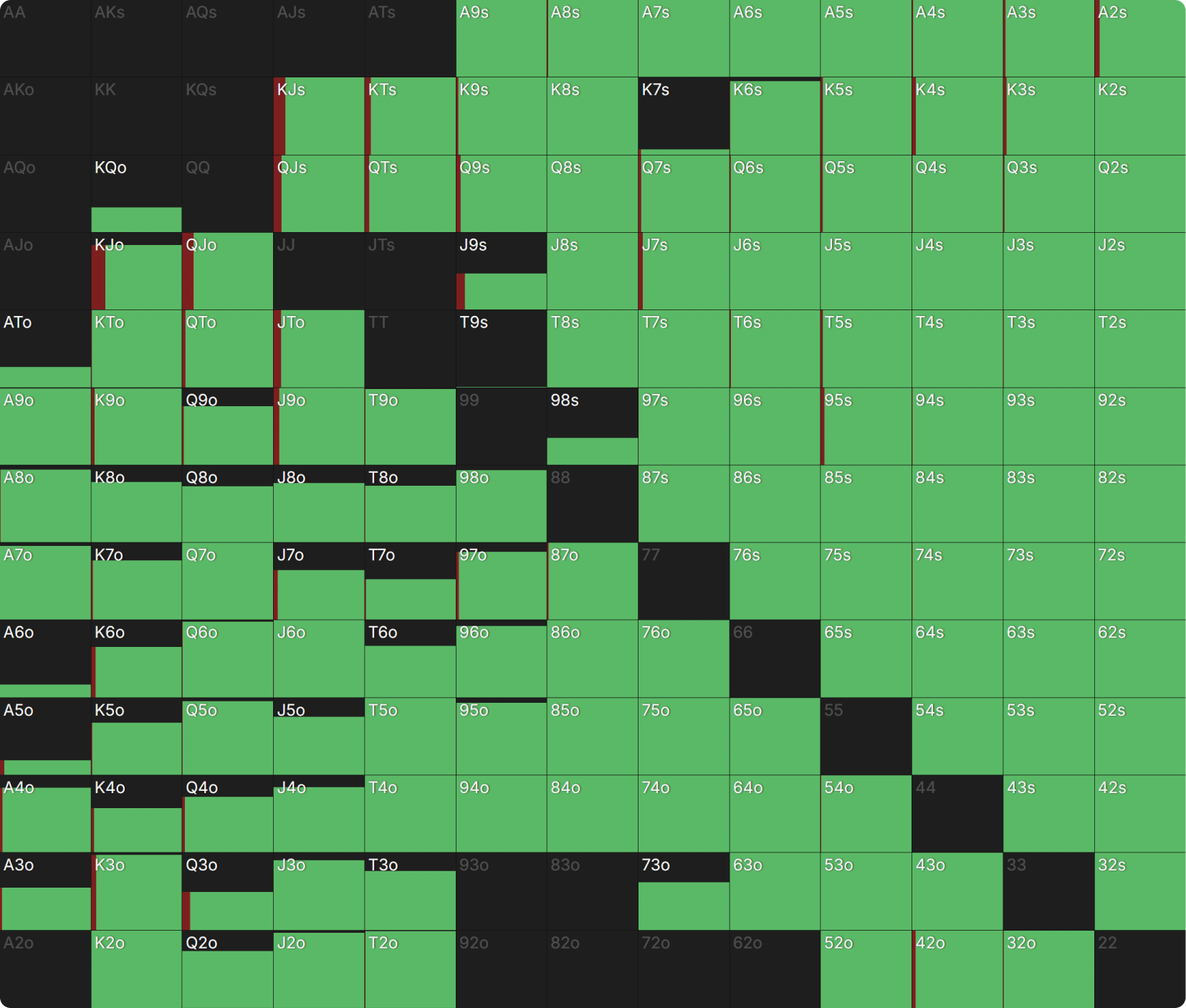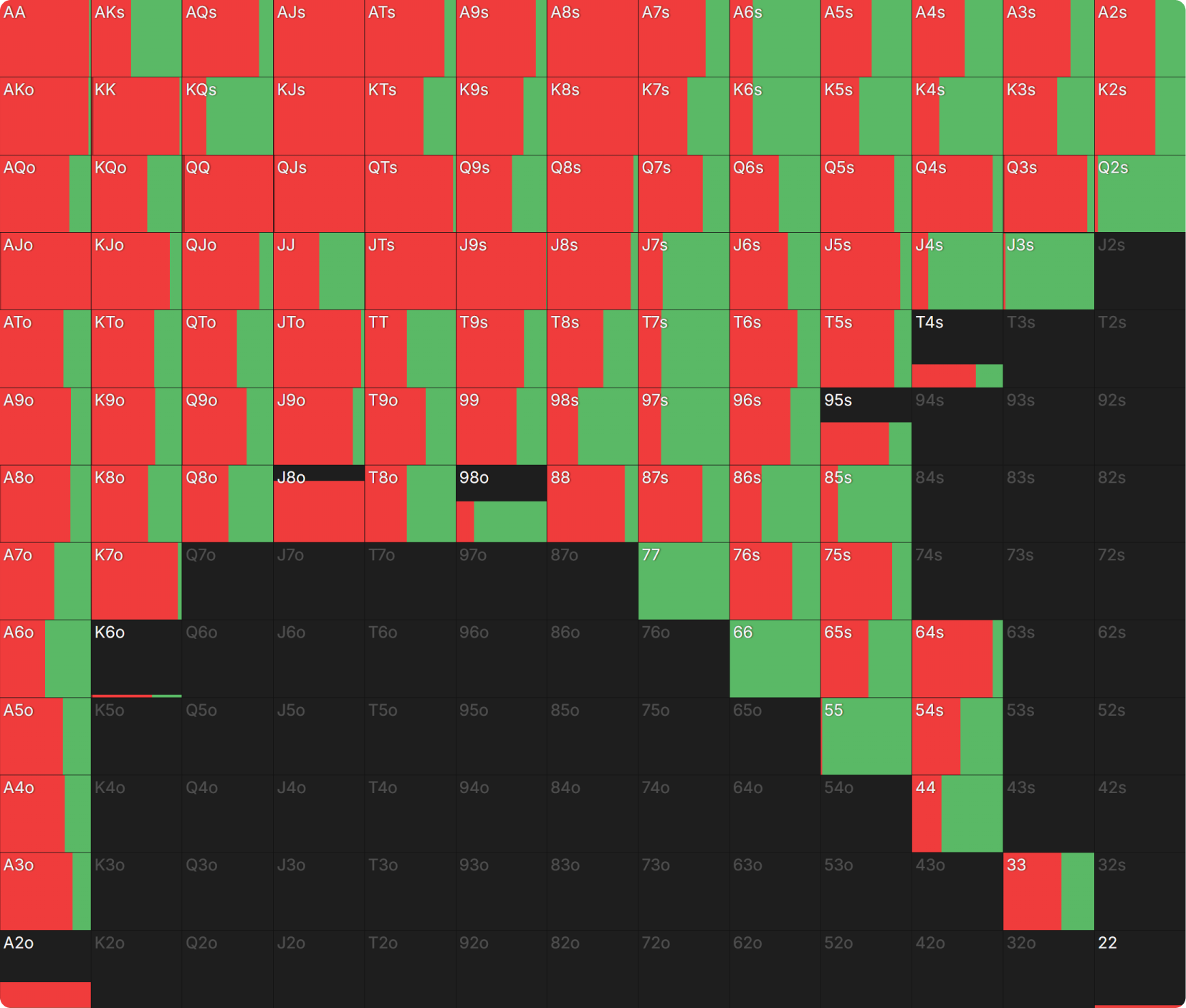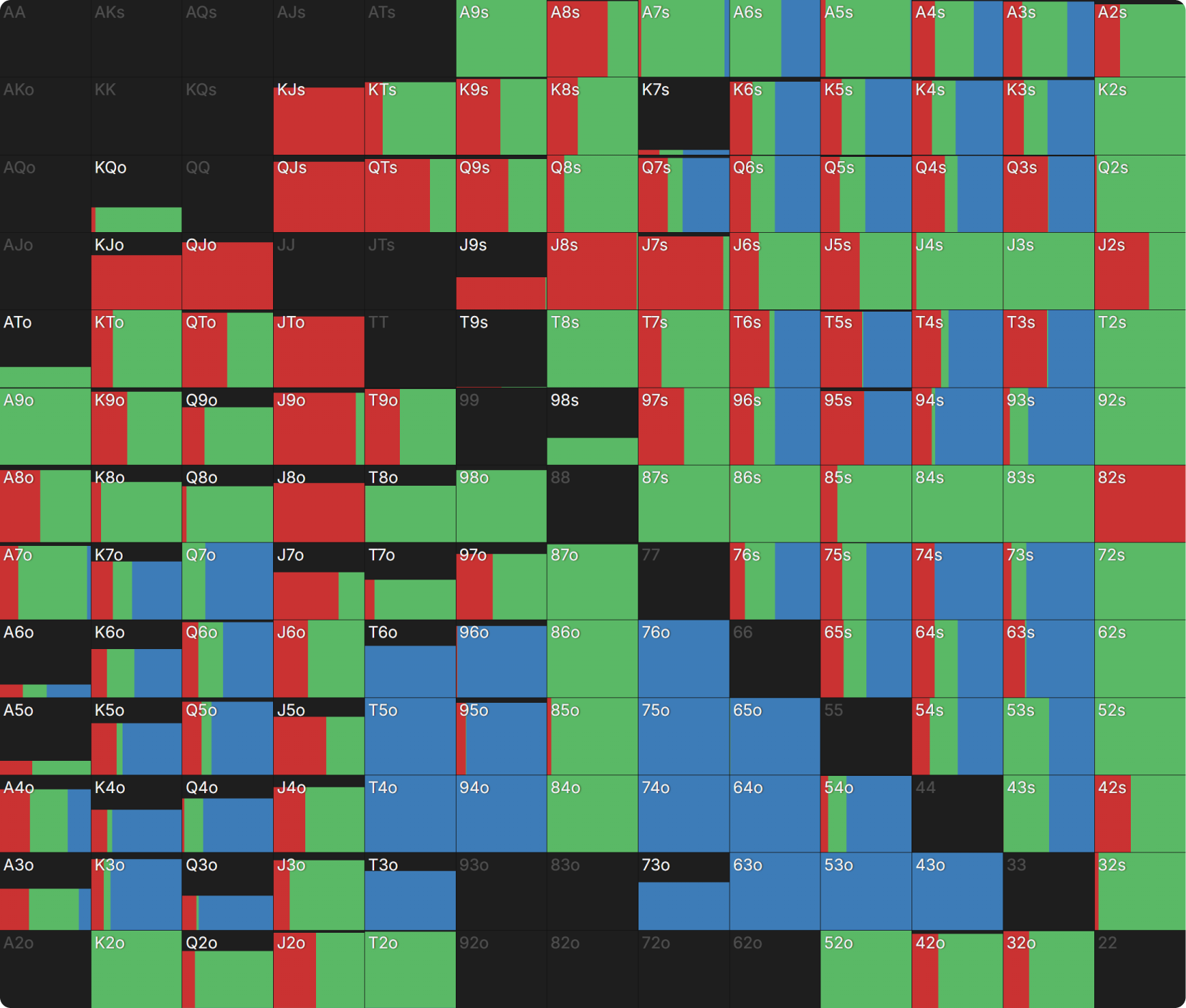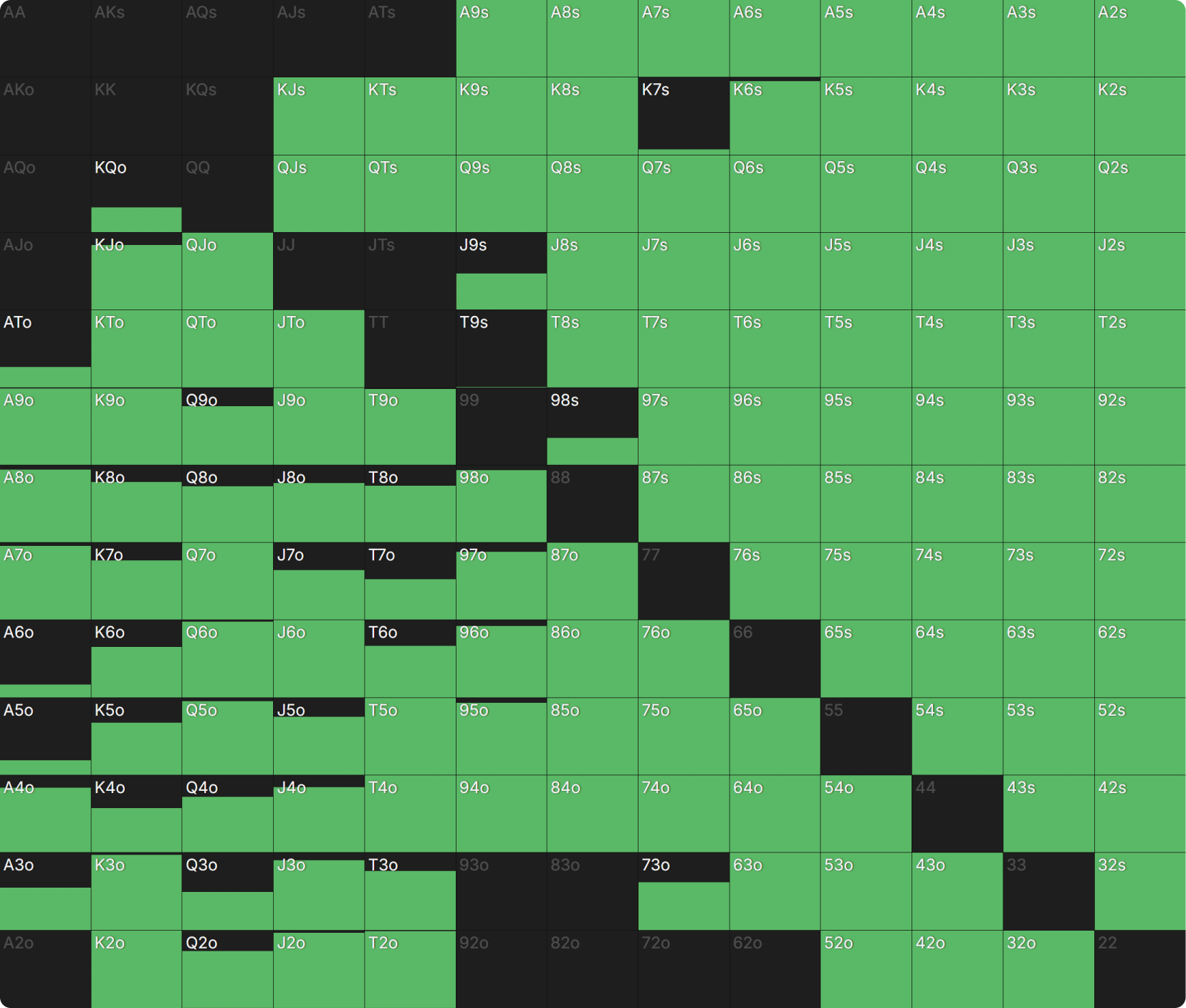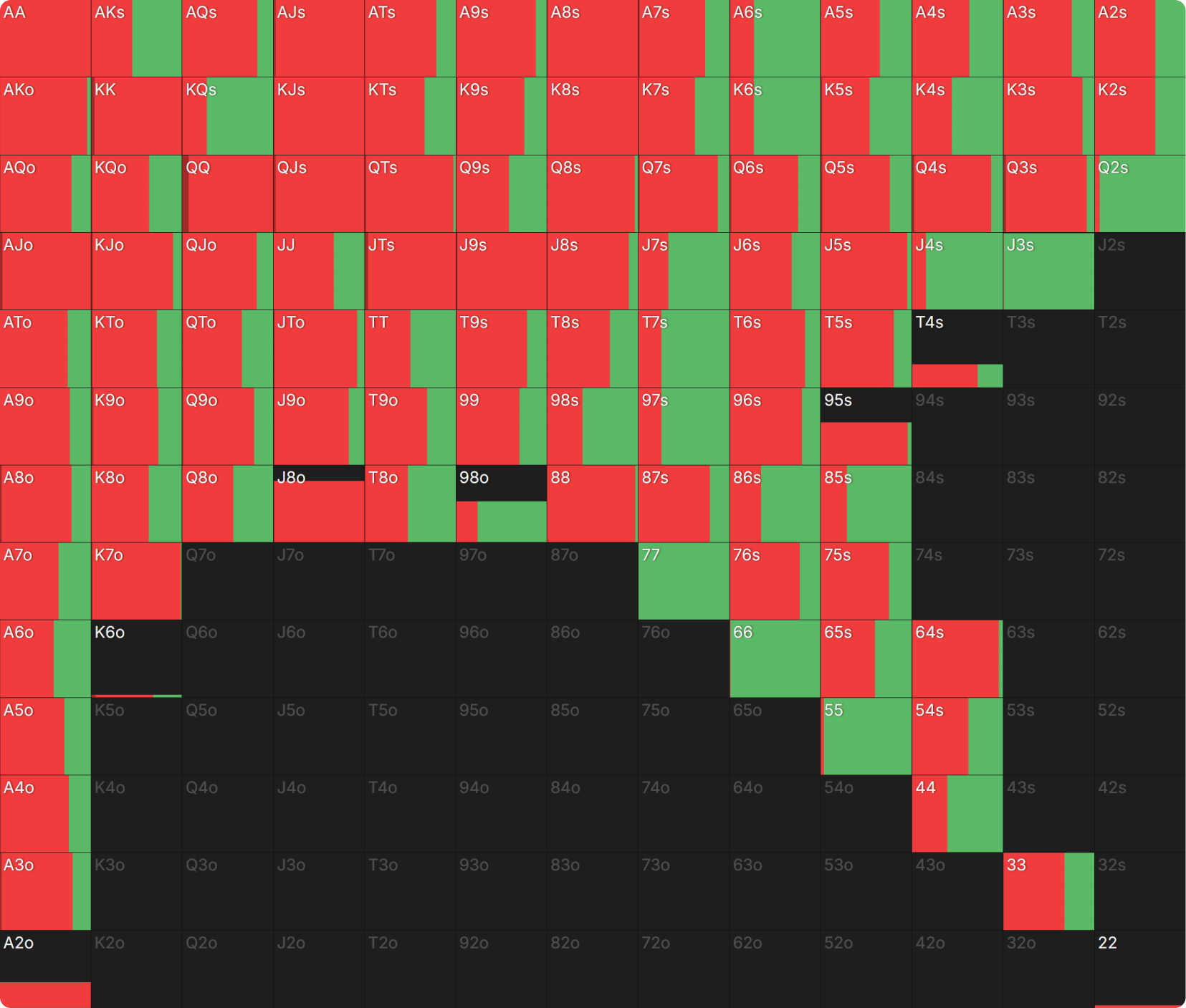A Comprehensive Guide to Playing Mystery Bounties
The Mystery Bounty format looked like a novelty event at first, but swiftly became a mainstay of live poker, so much so that in many ways they have become the 2nd Main Event for a lot of poker festivals. It took a while, but the format has finally penetrated online poker, with most operators offering Mystery Bounty MTTs.
The format still has detractors, largely because of their gambling nature. The player who wins the most money will rarely be the most skilled player, and in some instances, can just be somebody who luckboxed their way into busting just one opponent, scooping the biggest prize, to then being eliminated themselves.
However, the Mystery Bounty format is here to stay, so it’s important to understand what makes them different from regular MTTs and PKO MTTs.
How Mystery Bounties Work
The format is constantly evolving, but at the time of writing, most of them play out like a standard ‘vanilla’ tournament until a point where the bounties come into play. Some of the usual times when that happens are:
- When the money bubble bursts
- Day 2
- Somewhere already deep into the money
Most payout structures see either 70% of the buy-in go to the standard payouts with 30% being put into the bounty prize pool, others see a 50/50 split. When a player is eliminated during the bounty period, the player who busts them is awarded a random bounty prize. In every tournament, there will be a handful of huge bounties, and in some instances, they’ll even eclipse the biggest prize from the standard payout structure. The most famous example of this is the $1,000 Mystery Millions at the WSOP, where two players won $1 million bounties this year, which was also the top prize for the eventual champion.
The reason the bounties are activated so late, compared to a PKO where they can be won from the start, is so that the biggest bounties can be huge and marketable.
In the live variant of a Mystery Bounty, a player can often choose when to collect their bounty. They can do it right away or they can wait to collect it later. Contrary to what many believe, you cannot time when to collect your bounty to improve your odds of winning a big one. Consider the following:
Three envelopes:
• $1,000
• Empty
• Empty
Helen, Raheem, and Pierre take turns picking a ticket. After this, they take turns opening them.
1) Helen goes first, and her chances of winning the $1,000 = 33.33%
2) Raheem goes second, and 66.67% of the time, he has a 50% chance of winning the $1000. (The other 33.33% of the time, he is drawing dead because Helen has already picked the $1,000 ticket).
66.67% x 50% = 33.33%
3) Pierre goes last, and his chances of winning the $1,000 = 33.33% because 66.67% of the time, one of the other two has already won it instead.
Even if you gave these three people the choice of when to pick a ticket, they still only have an equal 33.33% chance of winning the $1,000.
Strategically, Mystery Bounty MTTs play similarly to PKOs once the bounties have kicked in.
The impetus is on the players to play looser to hunt bounties.
There are some differences with PKOs:
- The bounties are mysterious/unknown.
- Winning a mystery bounty does not increase your own bounty size.
- The bounty period starts later on in the tournament, so ICM is a significant factor in all mystery bounty decisions.
- The 1st place prize is relatively much larger than the 2nd place prize, just like in a regular vanilla tournament. (In a PKO, the 1st and 2nd prizes are usually equal because the eventual winner also wins both final bounties, which will be sizable.)
Bounty Strategy
A basic guideline for mystery bounties that the uninitiated can use, until having studied them more in-depth, is to:
Play mystery bounty tournaments like a regular, non-bounty tournament before the bounty phase, then adopt the same strategy as for the ICM stage of PKO tournaments.
You obviously cannot win a bounty by knocking somebody out before the bounty stage, so a ‘vanilla’ strategy is the way to go then. After that, widen your ranges much in the same way you would a PKO tournament when ICM is a factor. You have to play looser and try to get hands all-in to win bounties. This includes playing more hands that perform well multiway, but you can’t go too wide because of the restraint that ICM creates.
Table management is very important. By this, I mean tailoring your strategy to cover as many players as possible because you need to cover players in order to win their bounty. This could be by taking on extra risks to build your stack to cover people or, conversely, by passing up on small edges to maintain a chip lead at the table.
Adopting a PKO strategy in mystery bounties is much better than adopting a non-bounty strategy. However, there are differences, the biggest one being that bounty values are known in PKOs, they are not in mystery bounties. The nature of mystery bounties is that the bounties we win are variable and random. So what do we do to account for that?
The way to get traction on the problem of adjusting for mystery bounties is to view them as the average bounty value remaining in the tournament.
Examples
Let’s look at a couple of examples to show what we mean:
1,000 players started, 100 remain, in a $200 mystery bounty where $100 of the buy-in goes into the bounty prize pool.
The 100 bounties are paid out as follows:
• 1 x $20,000
• 2 x $10,000
• 3 x $5,000
• 11 x $1,000
• 23 x $500
• 60 x $375
Most (60%) of the time, you will win a bounty of $375, but a little under half the time, you will win something larger.
What if the payout structure was instead like this?
• 1 x $96,625
• 99 x $375
Would you play differently?
Most players in mystery bounties do, they have their eyes on that big prize. Technically, however, the strategy should be exactly the same. With $100,000 in the bounty prize pool and 100 players (so, 100 bounties) remaining, it averages out to $1,000 in both scenarios. The average bounty’s worth is what matters. Its expected value, in other words.
Working out the average bounty value is easy in online tournaments.
Average Bounty = Remaining Bounty Prize Pool / Remaining Players
In live poker, you are at the mercy of how much information is available on the tournament clocks. At the very least, information about the biggest bounties remaining should be available, and you will have to work out the average bounty value in a more ad hoc fashion.
In GTO Wizard, to study mystery bounties:
- Select the “KO Knockout” payout option
- Assign everyone the same (average) bounty
The biggest error players make in mystery bounties is ascribing too much importance to whatever the biggest bounty is worth. This will manifest in them overplaying their hands because the big bounty is still in play. On the opposite side, when the biggest bounty is removed from the pool, something similar happens: they give up entirely and adopt a ‘vanilla’ strategy. ‘Bounty disappointment’ is a very real mental game issue.
One final strategic consideration before we jump into some hand examples: late registration. It is never profitable to late register a PKO because you missed out on the chance of winning every bounty that was won before you arrived. However, late registration is a profitable endeavor in mystery bounties because the closer you start to the bounty phase, the more likely it is you can win bounties without any roadblocks. Some of the early versions of mystery bounties allowed you to late register straight into the bounty period, which was extremely profitable, especially considering you would cover every other player who also late registered.
The only counterargument to this is that you need a covering stack to thrive in mystery bounties, and late registration means you come in shorter than the average.
Hand Analysis
Let’s jump into a hand. Before we start, a quick word about the ranges. Using the Chip EV ranges in GTO Wizard is not a good idea; they don’t reflect the ICM effect of the late stage of the tournament nor the effect of bounties in play. A useful starting point would be the PKO ranges in the late-stage solutions library. To begin with, we will look at a non-bounty range to see what the baseline would be, with the same ICM effect.
In the following examples, we are going to compare vanilla tournament strategy to mystery bounty strategy to get a sense of the strategic adjustments. There are two ways we can do this: we can either use vanilla ranges for the vanilla tournament and bounty ranges for the bounty tournament to replicate the ideal strategy for both, or we can use the same range for both tournaments for a more accurate view of the adjustments. Neither approach is perfect, but I prefer using the same range twice to get more insights into strategy adjustments.
In this example, we have:
• $200 large field MTT
• 98 players remain
• Average stack is 40bb
The bubble has burst and the next payout is $550 → The BTN has 32bb and opens → They are called by the BB who has 50bb → The flop is J♠8♠2♦.
We are using the dynamic bet sizing option in GTO Wizard AI.
Without Bounties
First, let’s look at a baseline example of the hand, in a vanilla MTT, at the same ITM stage.
The first action is for the BB to check 100% of the time:
This is the BTN response to that check:
This is almost a range-bet with the BTN having a range advantage of 60.5%. This is why a smaller bet is favored. A few hands prefer the larger bet size, mostly top pair or overpair hands, with some bluffs thrown in.
When the BTN bets small (25% pot), this is the BB response:
~40% of hands fold, we see check/raises mostly from top pair hands and bluffs, and the middling hands call.
With Bounties (Average = $2,653)
Let’s now replicate this situation in a mystery bounty that has a 50/50 payout structure. We have doubled the buy-in to $400 just so we can keep the initial payouts the same (just to keep things easier in GTO Wizard), rather than halving them. This won’t affect the strategy.
Let’s say the bounty prize pool is $265,300, which makes the average bounty $2,653. Notice that I haven’t listed the specific prizes because they are a distraction. We are only dealing with averages.
This is the new BB first response:
No real change there, let’s move on to the BTN response to a check:
The betting frequency has come down considerably, from ~85% to ~67%. The bet size is even more weighted toward the small sizing.
Why is this? Well, the BTN is covered by the BB. This means the BB is much more incentivized to call or raise, to eventually try to win their bounty by putting them all-in. A consequence of this is that the BTN has to play more carefully because they can’t exert as much fold equity as they could in the non-bounty example.
When they do bet small, this is the BB response:
There was only a slight decrease in folding; the BB folded ~40% of the time in the first example, and they do so ~37% of the time now. The big difference is in BB’s raising. They raise more frequently; 21% of the time instead of 14% of the time. The raise size has decreased from 95% to 52%. In order to win the bounty, they have to get the stacks in at some point. The BB wants to get the BTN all-in, they don’t want them to fold, hence the smaller raise size.
With Bounties (Average = $1,000)
Let’s look at another example, the same setup, but this time the average bounty is much smaller; only $1,000. This would replicate a scenario where the biggest bounty has been drawn, bringing the average down considerably.
Once again, the BB checks 100% of the time:
This is the BTN response to a check:
The BTN can bet a little bit more than in the last example. When they do bet small, this is the response:
There is a slight increase in folding. The raising range is about the same. The BTN can bet a bit more because they can get more folds. But my main reason for including this example was to demonstrate that:
A big drop in the bounty prize pool does not lead to a significant change in the strategy.
As mentioned earlier, a lot of players gamble whenever the big bounty is in play and shut down when it has gone. Here we have seen that, by focusing on the average bounty value instead of the largest single bounty, we are guided in the right direction of keep playing aggressively to win bounties.
Conclusion
The key to understanding Mystery Bounty tournaments at the table and in study is to focus on the average bounty value, not the biggest single bounties left in play. The biggest bounty being removed from play does not necessarily change the strategy all too much. This is much easier to internalize when you are focusing on average bounties from the outset.
Mystery bounties tend to award bounties after the bubble has burst. This means that ICM will be a factor alongside bounties in the decision-making process. If you are going to use a PKO strategy or PKO-inspired ranges in a mystery bounty, it is better to go with the endgame PKO ranges rather than early-game ranges.
With bounties on the line, covering players can play more hands, but perhaps more crucially, play their hands more aggressively.
This means that covered players can’t play as aggressively because they are less likely to get folds, but there will be an inflection point where the average bounty is so large that betting frequency increases for the covered player because they will get called so wide.
Finally, it’s not possible to time a mystery bounty regardless of the explanation you have received or the lucky rabbit’s foot you possess, as math has proven to us. The best thing perhaps about mystery bounties is that they attract people who think otherwise; don’t be one of them.
Author
Barry Carter
Barry Carter has been a poker writer for 16 years. He is the co-author of six poker books, including The Mental Game of Poker, Endgame Poker Strategy: The ICM Book, and GTO Poker Simplified.
Wizards, you don’t want to miss out on ‘Daily Dose of GTO,’ it’s the most valuable freeroll of the year!
We Are Hiring
We are looking for remarkable individuals to join us in our quest to build the next-generation poker training ecosystem. If you are passionate, dedicated, and driven to excel, we want to hear from you. Join us in redefining how poker is being studied.







